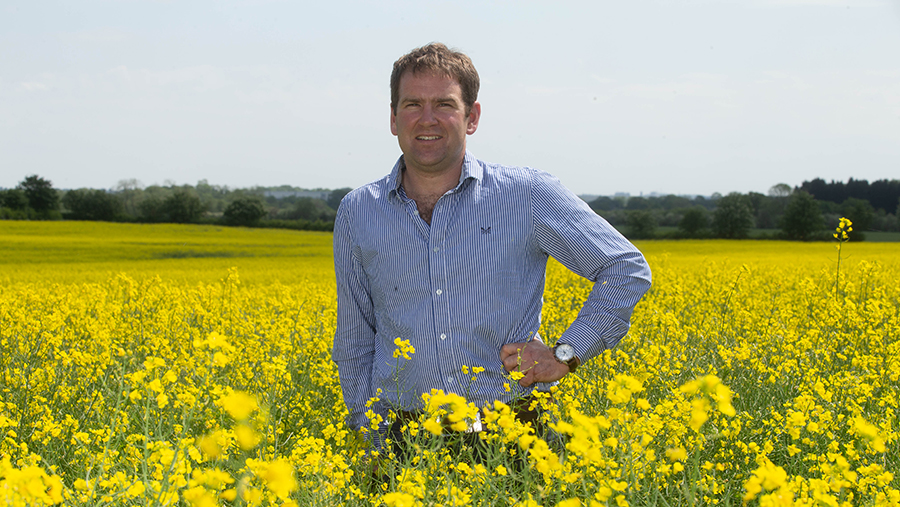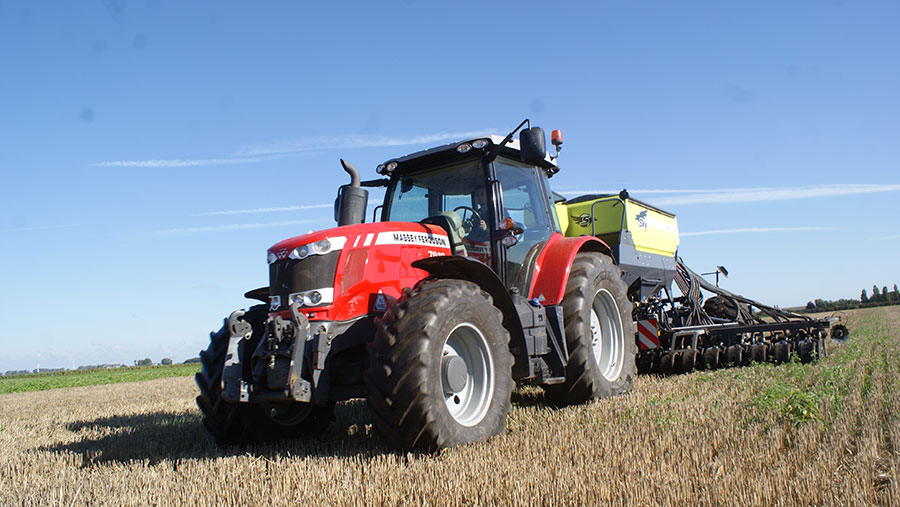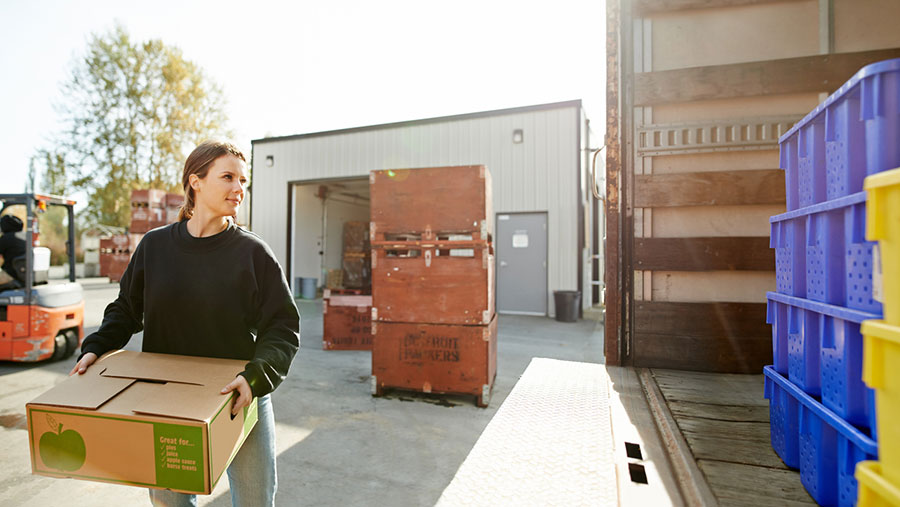Advertiser content
Don’t focus on carbon
Carbon tunnel vision is increasingly common
Google “carbon farming” and you’ll get 600k results; the third is an EU report called “Carbon Farming: Making Agriculture fit for 2030”.
There are 75 companies on Agfunder’s “Ag Carbon Map”. McKinsey, a consultancy, says the voluntary carbon market will be worth $50billion in 8 years (50x more than today).
Combined with the NFU’s net-zero ambitions, volatility, the loss of BPS and its unsurprising that many farmers are looking to carbon.
However, farm businesses must be realistic about what carbon trading can achieve in isolation and what it cannot.
The UK’s ‘leading’ carbon trading schemes promote prices between £15-30 per credit, with 2-3 credits/ha available. This is no substitute for BPS even before the brokers take their cut. It may not even increase profitability.
For example, transitioning to the ‘regenerative’ practices rewarded by these schemes, such as no-till, will have a spectrum of effects over several years.
Yields and profitability may fluctuate as soil health improves and input levels change.
Every farm is different. Every management decision has trade-offs. These trade-offs highlight the importance of fully understanding the current position before deciding a way forward. There is no one way forward.

Michael Kavanagh, a founder of The Green Farm Collective, recently traded carbon + biodiversity through Trinity Natural Capital Markets at £100/credit © Trinity AgTech
Carbon + biodiversity + water = more £/ha
Incomes from carbon farming can be much higher than the quoted £15-30/credit, but only if farm businesses look beyond carbon.
Natural Capital is defined as the world’s stock of natural resources. It includes biodiversity, air, soil, and water – and it’s a huge opportunity for farm businesses.
Trinity Natural Capital Markets, a marketplace for carbon and natural capital, recently saw carbon credits traded at more than £100 per credit.
Several factors influenced the high price, but the leading factor was the addition of a biodiversity co-benefit.
Environmental co-benefits, such as biodiversity and water quality, can be associated with carbon credits. Buyers with a broader sustainability agenda will pay significantly more for carbon credits associated with these co-benefits.
Most farms will be able to claim co-benefits alongside carbon credits provided they have the correct software, for example, Sandy by Trinity Agtech, which measures a farm’s whole natural capital potential, not just carbon. This is because co-benefit generation and carbon reduction are often complementary.
For example, activities such as cover cropping, regenerative hedgerow management, and wildflower mixes all create more nature friendly habitats, whilst having a positive impact on carbon sequestration.
Farmers trading carbon without associating co-benefits may be losing out on a substantial revenue stream.

Carbon trading initiatives have focused almost exclusively on arable farms. Trinity Agtech opens opportunities to all Enterprises. © Trinity AgTech
Scenario planning
Making informed decisions about whether to engage in carbon trading is difficult. Farmers will be accustomed to balancing yields and profitability when deciding their nutrient management or crop protection strategies. However, carbon adds an additional environmental dimension.
The most effective scenario planning will come when environmental, financial, and agricultural intelligence are connected in one place. This enables farmers to analyse the real-world impact of varying management strategies.
For example, decreasing nitrogen application rates may not ultimately be profitable given its negative impact on yields; however, combine with income generated from carbon reduction credits and the strategy may be sound.
This is the holistic decision making that Trinity Agtech’s Sandy was created to enable.
Sandy uses predictive intelligence to help land managers make more informed decisions by predicting the environmental, financial, and agricultural impact of management actions.
The technology is suitable for all major enterprise types, and all farm sizes.
Sandy can even suggest strategies. Input objectives, budget, acceptable yield loss, agroforestry strategy and Sandy will recommend a range of plans.
For example, reaching net-zero within the decade through a move to no-till, hedgerow planting, nitrogen reduction, and holistic mob grazing.
Carbon trading, even with environmental co-benefits, will not be suitable for many farms. Some will focus on provenance, biodiversity, or intensifying production.
Others may choose a hedged strategy, where some carbon is traded, and some retained.
What’s importance is having access to the holistic intelligence that enables informed decision making on a farm-by-farm basis.
Trinty Agtech predicts that fewer than 20% of their customers will trade carbon. Others are using Sandy to evidence their sustainability credentials to boost farmgate prices.
A data-entry time sink
A common barrier to entry for any new technology is the time required to learn the system and input the data. Carbon is no different.
Recently, one farmer investigating a popular carbon trading scheme estimated that it would take a full week to onboard his farm. The platform required that data be entered manually, field by field.
This is especially frustrating for farms who have made the investment in digital farm management software.
Farmplan’s Gatekeeper and Muddy Boots’s Greenlight Grower Management cover almost all the UK’s arable land. And they include much of the information required by carbon tools, such as input, cropping and cultivation data.
Integrations between farm management systems and carbon/natural capital solutions offer farmers significant benefits. Initial and ongoing data entry are reduced.
In the future, compliance with ELMS, water directives, supply chain obligations, and evidencing provenance can all be simplified.
It’s surprising, therefore, that only one solution, Trinity Agtech, offers data integrations with Farmplan’s Gatekeeper and Muddy Boot’s Greenlight Grower Management.

Sandy, by Trinity Agtech, enables farms to benefit from new opportunities arising from natural capital without having to divert land out of production. © Trinity AgTech
Safeguarding the food-centric farm
The conversion of upland farms into plantations to offset corporate emissions has been well documented; some Welsh farmers have been priced out.
This has knock-on effects for rural economies and domestic food production. Suspicion of these carbon schemes is well justified.
Not all carbon trading platforms adopt this model. Some reward changes to farming practices that do not significantly reduce food production.
Though even here, farmers may have little control over how the credits are sold.
The model employed by many schemes has been for farmers to sell to brokers who sell on farmers’ behalf; it’s possible that farmers will not be pleased about who those credits are offsetting, nor do they have full control of sale price.
Trinity Natural Capital Group set out to challenge this model. Sandy, by Trinity Agtech, provides a means of navigating natural capital opportunities, including and beyond carbon.
We estimate that 80% of our customers will never trade carbon; farmers are looking to biodiversity net gain (BNG), provenance-backed produce, compliance, and holistic business intelligence.
Our sister company, Trinity Natural Capital Markets, has spurned the broker model in favour of an ethical marketplace.
Farmers set their own carbon price and have complete control over what happens to their credits.
Environmental co-benefits push up credit prices and new features and technologies keep costs affordable, lowering barriers to entry for farms.
Carbon has the potential to improve business resilience, but it’s not the only option.
Farm businesses should explore the full range of natural capital and traditional opportunities. The right software will make navigating these opportunities easier.
Provided by
Sandy is the Smart Natural Capital Navigator from Trinity Agtech. Sandy’s award-winning, easy-to-use software enables farms to boost business resilience through measuring, managing, and monetising their natural capital, including carbon, biodiversity, agroforestry, and water protection.
Sandy is completely independent, developed by a collaboration of farmers and scientists, and aligns with all major standards to provide farmers with the industry’s most rigorous, accurate, and future-proof natural capital measurements.
Farms of all sizes & enterprises trust Sandy, including Barfoots, Duncan Farms, EVG Europe, The Green Farm Collective, Jersey Dairy, Kingshay, and Velcourt.
Sandy, for all farms of all sizes, everywhere.
Find out more at trinityagtech.com

